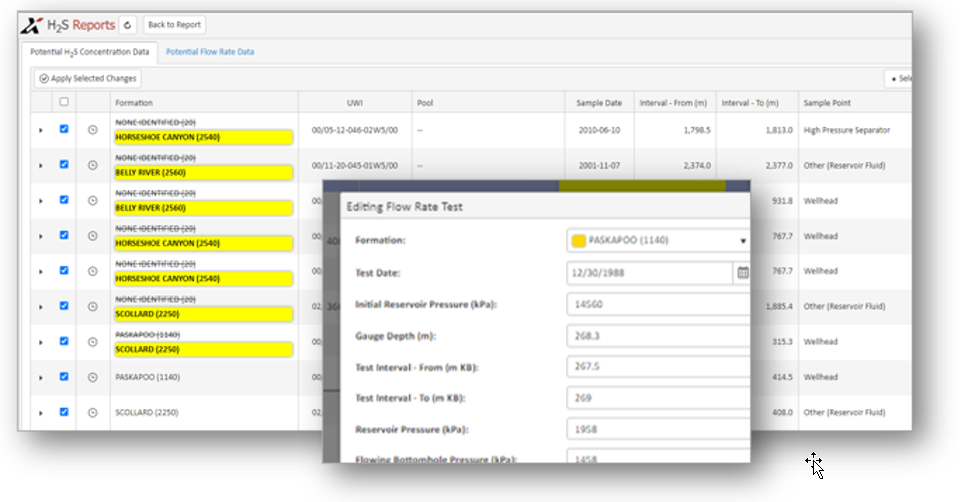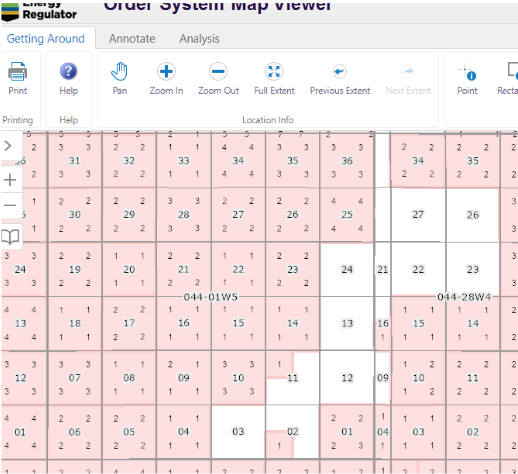Word To The Wise: H2S Success
February 20, 2024
In Alberta, prior to commencing drilling operations, operators are required to submit an H2S Release Rate Assessment to the Alberta Energy Regulator (AER), as outlined in Directive 056. The industry has the opportunity to utilize data for thorough due diligence, not only to ensure compliance but also to prioritize the safety and well-being of the public.
The AER lays out requirements for an H2S release rate assessment in Section 7.7.15 of Directive 056: Energy Development Applications, explaining their reasoning with this statement:
The AER requires the applicant to conduct an H2S release rate assessment for each category C, D, or E well to ensure public safety when developing projects containing H2S gas. The H2S release rate assessment determines the minimum EPZ for the proposed project and dictates the minimum radius used in the applicant’s participant involvement program.
For decades, operators have navigated the challenges of addressing, strategizing for, and minimizing the potential impact of encountering sour gas in Western Canada. Thanks to the direction from the AER and available data and research resources such as XI’s H2SReports, and H2SComplete, industry professionals can take conscientious measures to accurately evaluate the risks associated with H2S exposure.
Acknowledging the dual importance of proper H2S research for regulatory compliance and public safety is widely accepted within the industry. It is universally agreed that responsible operators must avoid cutting corners and neglecting due diligence.
However, challenges faced by industry professionals remain, including:
- Uncertainty: Gaining confidence in meeting regulatory expectations.
- Expertise: Accessing professionals well-versed in regulations and compliance.
- Skill: Relying on dependable staff to execute necessary tasks correctly.
- Resources: Balancing the demands placed on teams and professionals to complete the work.
- Expediency: Producing results within timelines to satisfy drill plans.
Navigating the complex regulatory landscape requires in-depth knowledge of local standards. Operators should ensure that their H2S planning aligns seamlessly with regulatory requirements, expediting the well license application process. The tools employed should not only enhance operations but also leave a clear trail for post-approval audits.
Benefits of a Data-Driven Approach for Well Operators:
Confident Decision-Making: Armed with robust data, operators can make informed decisions, minimizing uncertainties associated with H2S concentrations and release rates. Scrutinizing the data is crucial, and available tools can aid in this process.

Streamlined Regulatory Approval: Operators equipped with comprehensive research and tools experience smoother regulatory approvals, ensuring compliance and accelerating the well license application process. Further, professional insights from subject matter experts into the unwritten code of regulations can be a game-changer.
While we all strive to streamline work and simplify tasks, operators remain responsible for accuracy and are held accountable for results. Various solutions for either a data-driven or expert turnkey approach can make the job faster and offer with greater assurance.
Enhancing well operations through thorough H2S reporting enables operators to harness the results for their future success, eliminating the necessity for specific technological references. A holistic understanding of H2S reporting proves instrumental in empowering operators in their endeavors.
For more insights on H2S and Surface Casing Reports, check out XI’s blogs or join us for our upcoming webinar:
H2S Success – February 28th – 10am(MST)
Couldn’t catch our last webinar?
AssetBook M&A Workflow in Action is now posted on our website.
Each week, XI Technologies uncovers trends and insights using our enhanced data and software focused on the WCSB. If you’d like Word to the Wise delivered directly to your inbox, subscribe here. For more tips and to learn about how XI’s RegulatorySuite can help with your high-level analysis visit XI’s website or contact XI for a demo.